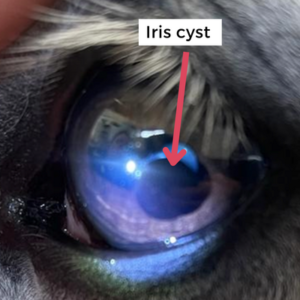GUTTURAL POUCH MYCOSIS
Ralph recently presented due to the development of mild head shaking behaviour and an abnormal respiratory noise when ridden. He subsequently developed an orange coloured nasal discharge but was otherwise well.
DIAGNOSIS
Endoscopic examination was used to determine the origin of the discharge. In Ralph’s case we could see that the discharge was exiting from one of his guttural pouch openings at the back of his throat. The image shows the fungal plaques covering the stylohyoid bone, cranial nerves and internal carotid artery.
Once inside the guttural pouch, a large volume of pus was noted in addition to white plaques which were adherent to the pouch lining. These findings were indicative of a fungal infection called guttural pouch mycosis.
We believe that Ralph’s headshaking and abnormal respiratory noise were secondary to the fungal plaques irritating the nerves within the guttural pouch.
Fortunately, guttural pouch mycosis is rare. Sadly, the disease can prove fatal in up to 50% of cases. The poor survival rate is due to fungal plaques breaking down the lining of the pouch, resulting in fatal bleeding or damage to nerves affecting the ability to swallow and breathe. It is not fully understood why or how this infection occurs and it can affect any horse of any age. Often the first presenting sign is a small nosebleed, which is why it’s important that we investigate nosebleeds in equine patients.
TREATMENT
Surgical treatment options are available that involve tying off the blood vessels to prevent severe bleeding. However, in Ralph’s case he was managed medically at our clinic. The team treated the affected pouch with an antifungal solution, in addition to removing the fungal plaques using forceps passed through the endoscope. He was given drugs to reduce inflammation and potassium iodide in his feed to increase the penetration of the antifungal wash.
Amazingly, on Ralph’s most recent assessment all of his fungal plaques had resolved. His signs of nerve irritation have largely improved, and the disease should not return.

